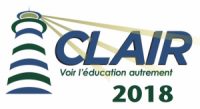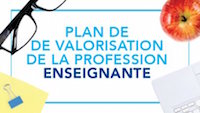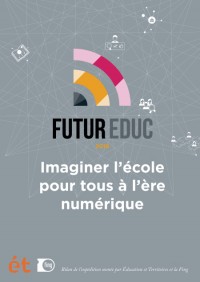Clément rapporte le travail extraordinaire de Alex Halevais qui écrit (étape par étape) sur son cybercarnet un chapitre pour un ouvrage à paraître dans le contexte du « International Handbook of Virtual Learning Environments« .
J’en retiens un extrait par section, mais la lecture en entier est capitale pour qui veut pressentir « la révolution » en train de se produire par l’utilisation des cybercarnets en éducation…
De la première partie qui s’intitule « Collaborative Web Publishing as a Technology and a Practice » :
« This focus on the aggregate nature of weblogs begins to indicate that blogs are more than simply a genre of web content, they represent a social practice. Restricting the definition to purely a description of the web sites generated is difficult because it misses so much. The only seemingly vital element of weblogging is a public forum (the World Wide Web) in which bloggers are able to associate and self-assemble into groups. The attraction to weblogging has less to do with the software involved and more to do with the kinds of social groups that emerge from interactions among weblogs and their authors. These practices provide for serendipitous, unstructured learning, as differing perspectives and discourses come into contact with one another. »
De la deuxième partie qui s’intitule « Weblogs as « Replacement » Educational Technology » :
« Weblogs can certainly serve as replacements for existing educational technologies, but their potential reaches far beyond this. Weblogs provide an environment amenable to decentered, distributed, experiential learning. One of the greatest differences between collaborative web publishing and other computer-mediated forms of educational interaction is that weblogs, wikis, and similar technologies encourage public engagement, interaction with a broad community, experiential learning, and an extension of the learning process beyond the physical and temporal boundaries of the classroom. »
De la troisième partie qui s’intitule « The Open Classroom » :
« This transparency is initially and primarily among the students in a class. In many cases, despite public accessibility of course websites, dialogue with those outside the class is comparatively sparse, especially when students are just getting started. It might seem that a student would be most concerned with what a teacher thinks about her work, but students are often far more concerned with how their peers view their work. In some cases, of course, this can be a difficulty. A student may be apprehensive about sharing her own work with her classmates, but the advantages to open work can be enormous. Students are generally interested in helping one another succeed, and when presented with assignments that invite collaboration, they find the work both enjoyable and fulfilling. »
De la quatrième partie qui s’intitule « Trips Without the Field » :
« Naturally, one of the reasons to remove the walls of the classroom is because it provides the opportunity for students to experience the world more directly. That experience can mean a number of things. As Rousseau noted in Emile (1979), we learn from nature, from other people, and from things, and only when these three masters are in harmony do we gain understanding. Experiential education is most often seen as somehow distinct from more academic kinds of classes and confined within service learning experiences, internships, practica, and outdoor adventures or museum trips. The ways people learn outside of classes is different from the ways they learn within traditional classrooms, and instead ³tend to emphasize wider goals better captured by terms like enculturation, development, attitude, and socialization² (Schauble, L., Beane, D.B., Coates, G.D., Martin, L.M.W., & Sterling, P.V. (1996)). »
De la cinquième partie qui s’intitule « New Apprenticeship » :
« When students put their name on an exercise for a teacher, they are identifying themselves, but when they post to a weblog, they own their words and are making a gift of their work to the community. »
De la sixième partie qui s’intitule « Timeless Education » :
« Naturally, we cannot always predict what our future selves will be proud or ashamed of, but by blogging for an audience that may include their future selves, the author once again places his or her learning within a very broad context. »
Mise à jour du 16 avril 2004 : De la septième partie qui s’intitule « Some practical implementation issues » :
« Increased involvement in large classes usually means providing weblogs for individual students or student teams. Both have advantages. Individual blogs may provide students with an opportunity to extend blogging beyond the classroom and engage in self-organized learning. They also allow students to integrate their work from other classes. I have encouraged this in my classes, suggesting that assignments and research done for other courses, if identified as such, is included in my evaluation of their work. Students have found this integration with other courses to be very helpful, and I have received comments from instructors in other courses indicating that the students become more active and interested in there work in those courses when they can share knowledge between classes. »
Mise à jour du 17 avril 2004 : De la huitième (et dernière) partie qui s’intitule « Collaborative web publishing in a democratic knowledge society » :
« Paolo Freire recognizes the power of dialogue, the power of naming and understanding the world. ³Only dialogue, which requires critical thinking, is also capable of generating critical thinking. Without dialogue there is no communication, and without communication there can be no true education² (1993, p.73). Freire sees the process of learning how to communicate as coterminous with the ability to live justly in the world. To put this in a different way, there is a significant difference between training and learning; the latter implies that the subject maintains a stake in the process and the outcome. Democracy begins in the classroom and the community. Students who direct their own learning can do so only by engaging the community. Just as it is impossible to learn effectively without engaging in discussion, consensus, and collaboration, it is equally impossible to engage in democratic collective action without a learning community. As John Dewey (1916) notes, free interaction among social groups and an interest in mutual goals are integral to both good education and good democracy. »
Il me tarde de lire la suite (en date du 17 avril, on peut dire qu’il n’y aura pas d’autres chapitres…); en attendant, je vais réfléchir à la possibilité de commenter sa prose sur son carnet (c’est fait !) dans un contexte où il se sert de l’outil du cybercarnet comme d’un « incubateur de prodution d’oeuvre littéraire » !
0 Commentaires
Pendant vingt-deux ans, l'école a été mon véhicule pour «changer le monde». J'y ai vécu des années fantastiques où j'ai beaucoup appris des élèves et où je suis allé au bout de certaines idées.
Depuis 2005, mon parcours en entreprises m'a permis d'aider des organisations à mieux prendre le virage numérique et ainsi de bien gérer le changement.
J'avoue être un idéaliste.
Je travaille de manière constructive avec tous ceux et celles qui veulent faire avancer la société !
Un autre véhicule me permet d'intervenir concrètement, celui de la politique. Je milite depuis 2011 à la Coalition avenir Québec et j'occupe actuellement le poste de vice-président Est-du-Québec. Aussi, depuis le 7 mars 2018, je suis le candidat dans Vanier-Les Rivières, en vue des prochaines élections générales au Québec.
On peut évidemment m'écrire pour le travail ou pour la politique.
Depuis 2005, mon parcours en entreprises m'a permis d'aider des organisations à mieux prendre le virage numérique et ainsi de bien gérer le changement.
J'avoue être un idéaliste.
Je travaille de manière constructive avec tous ceux et celles qui veulent faire avancer la société !
Un autre véhicule me permet d'intervenir concrètement, celui de la politique. Je milite depuis 2011 à la Coalition avenir Québec et j'occupe actuellement le poste de vice-président Est-du-Québec. Aussi, depuis le 7 mars 2018, je suis le candidat dans Vanier-Les Rivières, en vue des prochaines élections générales au Québec.
On peut évidemment m'écrire pour le travail ou pour la politique.
Billets de mon blogue les plus lus au fil du dernier mois
Rechercher
Commentaires récents
- Mario Asselin dans Commission parlementaire spéciale sur les impacts des écrans
- Mario Asselin dans Chapo l’AQUOPS
- ClementLaberge dans Les étudiants d’aujourd’hui ont des mimiques de poissons congelés
- Benoit therrien dans Projet Lab-école : il y a foule pour réinventer l’école
- Mario Asselin dans Magic Door suspend ses activités




